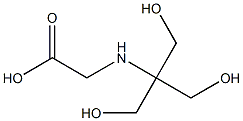Organic Chemistry
Microbes are very small and must grow and reproduce with medium. Different microorganisms have their different nutritional characteristics, that is, requires various kinds of media with different components, therefore, to grasp the principle of the medium, preparation method and application is very important, being basic skills for carrying out microbiological studies.
Medium composition
1. Peptone
Peptone is manufactured through using various kinds of proteolytic enzymes such as pepsin, trypsin and papain to degrade casein, bushmeat and soy protein. The main ingredients are amino acids, peptides, and other soluble nitrogen compounds. Therefore, according to the different materials and enzymes, its composition is also different.
Since the quality of the peptone has a significant impact on microbial growth and metabolic products so it should be paid attention upon application. But even the same brand of products may have varied quality due to different batches; therefore we’d better use products of the same batch. Since peptone is easily deliquescent, the bottles must be sealed after use.
2. Beef extract
Beef extract is the concentrate of the beef extract liquid. The beef contains abundant soluble nitrogen compounds, vitamins and other growth-promoting factors as well as inorganic salts, thus being widely used in bacterial culture. But commodities of different brands have different manufacturing approaches; therefore we’d better use the same brands.
3. Yeast extract
Yeast extract is manufactured through the low-temperature vacuum evaporation autolysis extract liquid of Saccharomyces cerevisiae or baker's yeast at low temperature. It is rich in amino acids, vitamins and inorganic salts. It is widely used in culture of microorganisms with a tendency in replacing the meat paste in recent years.
4. Wort
Wort refers to the unfermented fresh wort with no hops added before brewing the beer. It can be purchased from breweries as well as being made by ourselves: take 1 kg of barley malt powder, add 3 L of water and holding the temperature at 60 ℃ to make saccharification themselves until the liquid has no starch reaction. Filter, add 2 to 3 egg whites (helps to clarify the wort) to the filtrate; stir well, boil, filter again, then obtaining the wort. Water is added to 10 to 15 Pauline for spare purpose. Wort is suitable for culturing the fungi such as mould and yeast with the major ingredient being maltose, etc., but also contains nitrogen source and the growth hormone and so on.
5. Aspergillus juice
Aspergillus juice has been widely used in place of wort with the manufacturing method: inoculate the Aspergillus oryzae on rice, making “rice Daqu”. Take 1kg of dry “rice Daqu”, add 3L of water 3L and maintain the temperature at 60 ℃ so that it can undergo saccharification; the reaction is hold until the stopping of further starch reactions. Then, like the way of manufacturing of wort, have clarification and filtration.
6. Agar
The agar was originally made by Gelidium amansii. However, people recent have almost used green silky vegetable to make it. Agar is a sulfated polymer of galactose. Agar contains two main components: agarose and agar gel. Agar is characterized by being non-toxic to micro-organisms as well as being not able to be utilized by most microorganisms. When being heated to 100 ℃, it will be melted and can solidify after cooling to 45 ℃, so it is suitable to be taken as the curing agent of the medium.
The specification of agar product, because of different origins, often contains some impurities, being able to have an impact on some tests.
The types of the medium
According to the composition of the medium, the medium can be divided into three categories:
1. Synthetic medium: various kinds of pure chemical substance are formulated according to a certain percentages.
2. Semi-synthetic medium: it is formulated through the mixing between some kinds of pure chemical substances together with some kinds of natural substance.
3. Natural medium: it is formulated through using organic substances of natural sources.
From the physical state of the medium, they can be classified into
1. Liquid medium: liquid-like medium without coagulant.
2. Solid Medium: solid-like medium or solid-like agricultural medium made from supplementing 2% coagulant to a liquid medium.
3. The semi-solid medium: semi-solid medium made from supplementing 0.2%-0.5% coagulant to the liquid medium.
The most commonly used coagulant is microbial agar (followed by gelatin. It is not a nutrient and can be broken down and utilized by only a very few species of bacteria. Agar is extracted from seaweed and further manufactured. It is a kind of polysaccharide compound with the main ingredient being complex calcium sulfate polysaccharide. Agar is a reversible colloid with being converted into sol-state and molten agar at temperature above 96 °C. When the temperature drops below 42 ℃, it will be solidified back into a solid.
- Chemical Name:Peptone
- CAS:73049-73-7
- MF:C13H24O4
- Chemical Name:Meat extracts, beef
- CAS:68990-09-0
- MF:N/A
- Chemical Name:IRON PEPTONATE
- CAS:91079-40-2
- MF:
- Chemical Name:Gelatin peptone
- CAS:
- MF:
- Structure:

- Chemical Name:TRICINE
- CAS:
- MF:C6H13NO5
- Chemical Name:TRYPTONE (VEGETABLE)
- CAS:
- MF:
- Chemical Name:SOYBEAN MEAL
- CAS:68308-36-1
- MF:
- Chemical Name:COENZYME
- CAS:
- MF:C21H27N7O14P2
- Chemical Name:culture medium
- CAS:
- MF:
- Chemical Name:MALT EXTRACT AGAR
- CAS:
- MF:
- Chemical Name:5 KG YEAST EXTRACT SERVABACTERPOWDER
- CAS:
- MF:
- Chemical Name:Buffer solution, pH 1.00 (±0.01 at 25°C), No Color, Specpure, NIST Traceable
- CAS:
- MF:
- Structure:

- Chemical Name:1,4-BIS-[4-(6-ACRYLOYLOXYHEXYLOXY)BENZOYLOXY]-2- METHYLBENZENE
- CAS:193146-14-4
- MF:C26H36O4S
- Chemical Name:PRIMAGEN PEPTONE FROM ANIMAL TISSUE
- CAS:
- MF: